Address
304 North Cardinal St.
Dorchester Center, MA 02124
Work Hours
Monday to Friday: 7AM - 7PM
Weekend: 10AM - 5PM
Welcome to My Blog!
Before we dive into the content, I’d love for you to join me on my social media platforms where I share more insights, engage with the community, and post updates. Here’s how you can connect with me:
Facebook:https://www.facebook.com/profile.php?id=100071234835011
LinkedIn:https://www.linkedin.com/company/74943205/admin/dashboard/
YouTube:www.youtube.com/@shandongexpertmedicalequip4695
TikTok:www.tiktok.com/@expertmedical
Now, let’s get started on our journey together. I hope you find the content here insightful, engaging, and valuable.
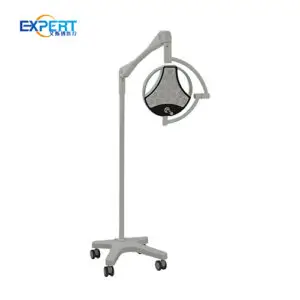
Examination surgical lights, also known as surgical lights or operating lights, are crucial pieces of equipment in any medical setting where surgical procedures, examinations, and other medical interventions are performed. These specialized lights provide high-intensity, shadow-reduced, and color-corrected illumination, enabling medical professionals to have a clear and precise view of the surgical field or examination area. Unlike standard lighting, examination surgical lights are designed to minimize glare, heat generation, and color distortion, ensuring optimal visibility and patient comfort. This comprehensive overview will delve into the various aspects of examination surgical lights, including their types, features, applications, and considerations for selection and maintenance. The importance of proper illumination in surgical and examination settings cannot be overstated. It directly impacts the surgeon’s ability to perform intricate procedures with accuracy and efficiency, ultimately contributing to better patient outcomes.
Examination surgical lights come in several types, each with its own advantages and disadvantages. Understanding these different types is essential for choosing the right light for a specific medical setting and procedure.
Ceiling-mounted lights are a common choice in operating rooms and surgical suites. They offer excellent maneuverability and positioning, allowing the surgical team to adjust the light’s angle and focus with ease. These lights are typically attached to a rotating arm system suspended from the ceiling, providing a wide range of motion and coverage.
Wall-mounted lights are suitable for smaller examination rooms or areas where ceiling mounting is not feasible. They are more compact and less expensive than ceiling-mounted lights, but their range of motion and positioning options may be limited.
Mobile lights, also known as portable lights, are designed for flexibility and portability. They are mounted on a wheeled base, allowing them to be easily moved between different locations. These lights are ideal for outpatient clinics, emergency rooms, and other settings where flexibility is paramount.
LED (Light Emitting Diode) technology has become increasingly prevalent in surgical lights due to its numerous benefits. LED lights offer superior energy efficiency, longer lifespan, lower heat generation, and excellent color rendering compared to traditional halogen or incandescent lights. They are also more environmentally friendly.
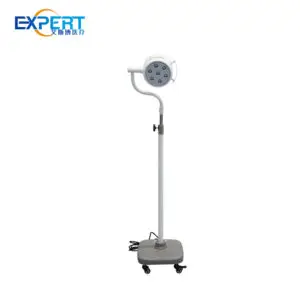
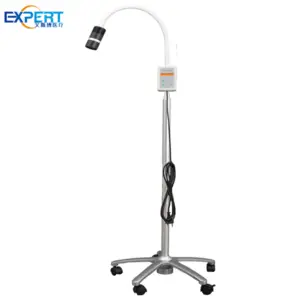
Several key features contribute to the performance and usability of examination surgical lights.
The intensity of the light is measured in lux (lx). Examination surgical lights need to provide sufficient illumination for detailed visualization of the surgical field. The intensity should also be adjustable to accommodate different procedures and preferences.
Shadows can obstruct the surgeon’s view. Examination surgical lights are designed to minimize shadow formation through multiple light sources and advanced optical designs.
CRI measures the ability of a light source to accurately reproduce the colors of objects. A high CRI is crucial in surgical settings to distinguish between different tissues and structures.
The light field size refers to the area illuminated by the light. The focus of the light should be adjustable to provide a concentrated beam for specific procedures.
Excessive heat from the light can cause discomfort for the patient and surgeon. Modern examination surgical lights utilize advanced heat management systems to minimize heat generation.








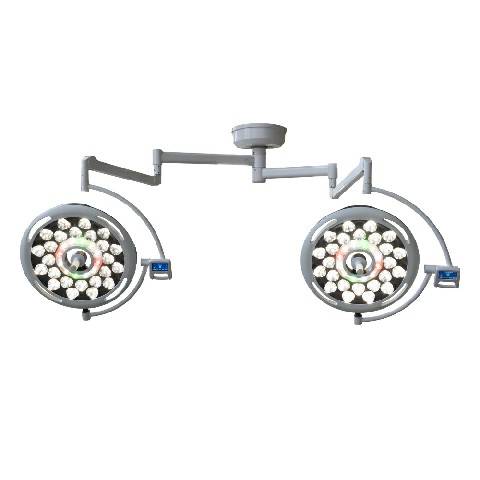
Examination surgical lights are used in a wide range of medical settings and procedures.
These are the primary locations for surgical lights, where they are used for various surgical procedures, from minimally invasive surgeries to complex open surgeries.
Examination surgical lights provide optimal illumination for patient examinations, diagnoses, and minor procedures in clinics and examination rooms.
In emergency situations, reliable and high-intensity lighting is crucial. Examination surgical lights play a vital role in providing clear visibility for emergency medical interventions.
Examination surgical lights are also essential in veterinary clinics and hospitals for animal surgeries and examinations.
Choosing the right surgical light requires careful consideration of several factors.
The type of surgical procedures performed will dictate the required illumination intensity, light field size, and other features.
The size and layout of the room will influence the choice between ceiling-mounted, wall-mounted, or mobile lights.
The initial cost of the light is important, but it’s also crucial to consider long-term costs such as energy consumption and maintenance.
Consider the latest technologies, such as LED lighting and advanced control systems, to ensure optimal performance and efficiency.
Proper maintenance is essential to ensure the longevity and optimal performance of examination surgical lights.
Regular cleaning and disinfection are crucial to prevent the spread of infections. Follow the manufacturer’s instructions for cleaning and disinfection procedures.
Regularly inspect the lamps and replace them as needed. Follow the manufacturer’s guidelines for lamp replacement and other maintenance procedures.
Schedule regular professional inspections and servicing to ensure the lights are functioning correctly and safely.
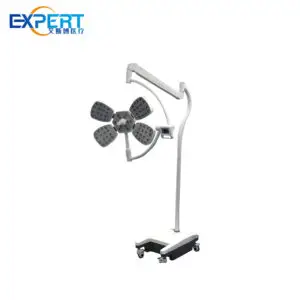
| Feature | Halogen Lights | LED Lights |
|---|---|---|
| Energy Efficiency | Lower | Higher |
| Lifespan | Shorter | Longer |
| Heat Generation | Higher | Lower |
| Color Rendering (CRI) | Good | Excellent |
| Cost | Lower Initial Cost | Higher Initial Cost, Lower Long-Term Cost |
| Environmental Impact | Less Environmentally Friendly | More Environmentally Friendly |
Examination surgical lights are essential tools in modern medicine, providing the crucial illumination needed for accurate diagnoses, effective treatments, and successful surgical procedures. Understanding the different types, features, applications, and maintenance requirements of these lights is vital for ensuring optimal performance and patient safety. By carefully considering the factors discussed in this comprehensive overview, medical professionals can make informed decisions when selecting and maintaining examination surgical lights, ultimately contributing to better patient care and outcomes. The continuous advancements in lighting technology, especially with the rise of LED systems, have significantly improved the performance and efficiency of these critical medical devices. As technology continues to evolve, we can expect further innovations in surgical lighting that will enhance surgical precision, reduce patient discomfort, and improve overall healthcare delivery. By prioritizing proper selection, maintenance, and utilization of examination surgical lights, medical facilities can ensure a safe and effective environment for both patients and healthcare providers.
How often should examination surgical lights be inspected?
Regular inspections should be conducted at least annually, or more frequently depending on usage and manufacturer recommendations.
What are the benefits of LED surgical lights?
LED lights offer superior energy efficiency, longer lifespan, lower heat generation, and excellent color rendering compared to traditional light sources.
How to choose the right examination surgical light?
Consider factors such as procedure type, room size, budget, and desired features when selecting an examination surgical light.
What is CRI in examination surgical lights?
CRI (Color Rendering Index) measures the ability of a light source to accurately reproduce the colors of objects. A high CRI is important for distinguishing between tissues during surgery.
